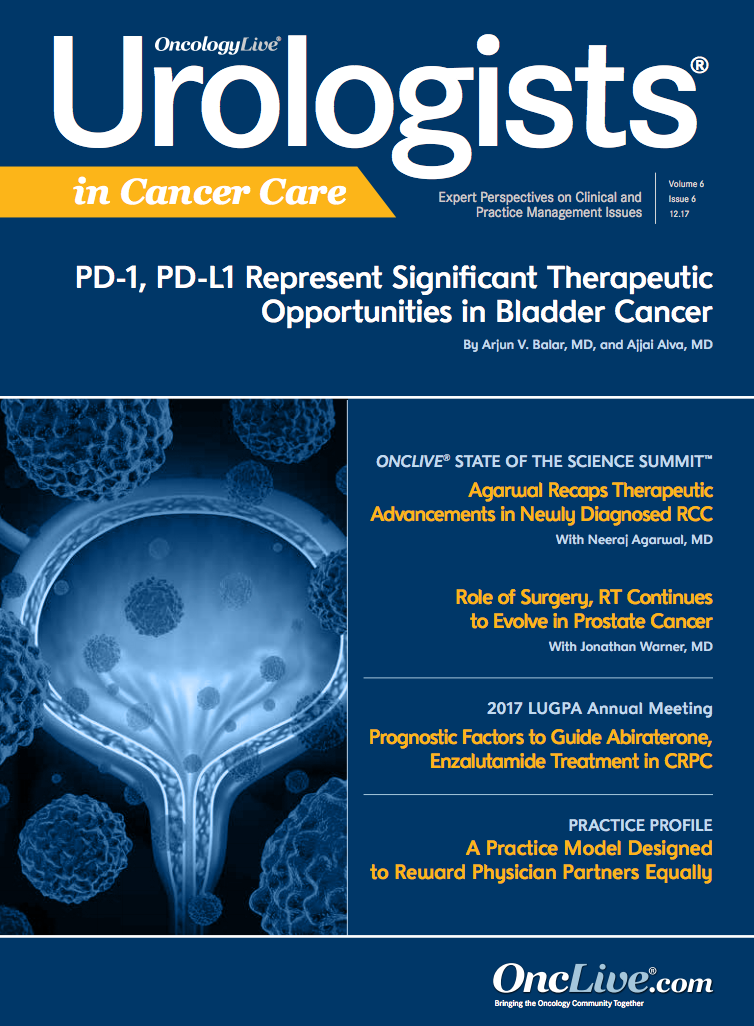Reflecting Back, Looking Forward in Urology Practice
Because of vertical integration, this has allowed us to maintain economic stability in the face of diminishing reimbursement for professional services.
Raoul S. Concepcion, MD, FACS
Over the Thanksgiving holiday, I had the opportunity to spend time with my immediate family in Ohio. My older brother, Bob, informed me that after more than 30 years of practicing general urology, the first few years with our father in Marion, he is closing down shop next spring. Never one to mince words, Bob said it was time to move on. He still enjoys the patient interaction and the challenges of surgery, but the everyday hassles of dealing with insurance companies, mounting regulatory hurdles, and—as we can all relate— hospital calls overshadow the joy of clinical medicine. Time for a new chapter, a new hobby, and to enjoy waking up in the morning, and not dreading engaging with electronic health records. His new outlook is: What can I learn today?
A professor in medical school told me that if I learned 1 new fact from every patient that I ever encountered, medicine would always stay interesting and keep me engaged. Unfortunately, all of us lose focus and as the demands of the business side mount, we often forget what brought us to this great field.
As a teenager growing up in central Ohio, my father, my earliest physician mentor, told me that the greatest thing about being a doctor is that you pretty much work for yourself and set your own hours, but have to own your successes and failures. For decades, that has been true and was a very simplistic formula. However, survival of the independent physician is in question. The community urology world has been very successful in integrating services that facilitate better patient care, increase efficiencies, and reduce costs relative to the same services provided in a hospital setting.
Because of this vertical integration, this has allowed us to maintain economic stability in the face of diminishing reimbursement for professional services. However, the approval of the Medicare Access and CHIP Reauthorization Act in April 2015 moves us down the road of transition from volume to value-based medical payments. Yes, it did repeal the much despised Sustainable Growth Rate formula, but now, rightfully so, places emphasis on quality, resource utilization, advancing care, and practice improvement. As this becomes fully implemented over the next few years, along with certain aspects of the Affordable Care Act, seeing more patients without regard to better outcomes and metrics will not necessarily result in sustained/increasing revenue.
We have to do better for our patients, not just say we do. As a result of all the changes at the state and federal level in this environment of budget neutrality and cuts, many large independent urology groups across the United States find themselves struggling during this period of transition. A new ownership model has now surfaced and there is a burgeoning interest of private equity firms entering the urology space. As my dad stated over 40 years ago, there is still a fierce desire among urologists to stay independent and not be owned or employed by an integrated system. These new joint ventures may offer an alternative to independent community urologists, rather than selling to their local hospital system or just getting out of the business in general. However, as a specialty, we do have to evaluate the long-term viability of these models.
According to the presentation at the annual Large Urology Group Practice Association (LUGPA) meeting this past November in Chicago, Illinois, speakers advised that the traditional fee for service is not somehow going to be revived. The proverbial train has left the station, heading down the rails of value-based care. As we have done in the past, we need to understand the nuances and figure out how to survive and take advantage of the opportunity that is presenting itself to us.
As we close the curtain on 2017, we certainly have enjoyed a number of breakthroughs in urologic oncology care, as well as a better understanding of the important genetic component that we will all need to embrace, not only for patient management, but also for family counseling. I suspect we will see more advances and approvals in 2018, especially with the rapid proliferation of genetic testing and biomolecular imaging that will hopefully help to guide us more precisely in determining therapy for each patient.
With that being said, I wish all of you a very happy holiday season and a prosperous New Year. And to my older brother, Bob, I wish you nothing but continued success and happiness once you step away from this great field that we have been fortunate to have been a part of over the past few decades.




